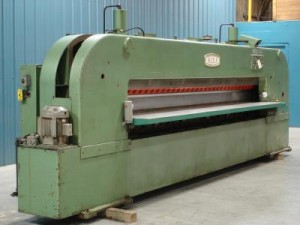 In woodworking, slicing machine operators use machines that slice pieces of wood and other materials that are used for woodworking. Veneer is a wood product that is commonly cut by slicing machines, while rubber, faux veneer, thin metal, and cork are examples other sliced materials used in woodworking. At most woodworking companies, slicing machine operators are responsible for the following tasks:
In woodworking, slicing machine operators use machines that slice pieces of wood and other materials that are used for woodworking. Veneer is a wood product that is commonly cut by slicing machines, while rubber, faux veneer, thin metal, and cork are examples other sliced materials used in woodworking. At most woodworking companies, slicing machine operators are responsible for the following tasks:
• Identifying and removing damaged or inferior cutting material prior to the cutting process.
• Weighing cutting material and measuring its thickness prior to commencing the cutting process.
• Setting up slicing machines, operating them, and continuously monitoring the slicing process.
• Preparing cut material for processing or shipment by sorting or packaging it.
• Entering cutting specifications using cutting machine computers, or manually adjusting cutting machines to the right settings.
• Resolving cutting machine jams and adjusting cutting settings as necessary.
• Performing light servicing and repairs to slicing machines.
Required knowledge
Slicing machine operators require the following forms of knowledge to carry out their tasks:
• Production/processing knowledge of raw materials, quality control, and cost control.
• Mechanical knowledge of new woodworking machines, particularly how to operate and service them.
• Mathematical knowledge of basic arithmetic.
• Design knowledge of the products that cutting materials will be used on.
• Educational knowledge of cutting machines and cutting processes to train new workers.
Required abilities and skills
Slicing machine operators require the following abilities and skills to carry out their tasks:
• Critical thinking for resolving unexpected issues in the cutting process.
• Verbal skills for communicating information to team members or trainees.
• Quality control skills for identifying subtle defects in the cutting process and resolving them prior to large production runs.
• Good concentration for monitoring the cutting process for extended periods of time.
• Manual dexterity for grasping tools and adjusting machine controls.
• Trunk dexterity for performing a variety of bending, twisting, and lifting motions regularly.
• Physical endurance for moderate to heavy lifting and standing for extended periods of time.
Job statistics
As of 2008, 75,000 slicing machine operators are employed in the U.S., with a projected decline in employment of -3% to -9% between 2008 and 2018. As of 2009, the median annual wage of slicing machine operators is $29,600 ($14.23/hr.). According to a national work survey, 60% of slicing machine operators have a high school diploma or the equivalent; 28% do not have a high school diploma or the equivalent; and 12% have attended college. Most slicing machine operators are employed in the manufacturing industry.
To learn more about becoming a slicing machine operator, contacting a trade school that offers courses in commercial woodworking or shadowing slicing machine operators at a woodworking company are good options. Slicing machine training may also be available through some apprenticeship programs.




